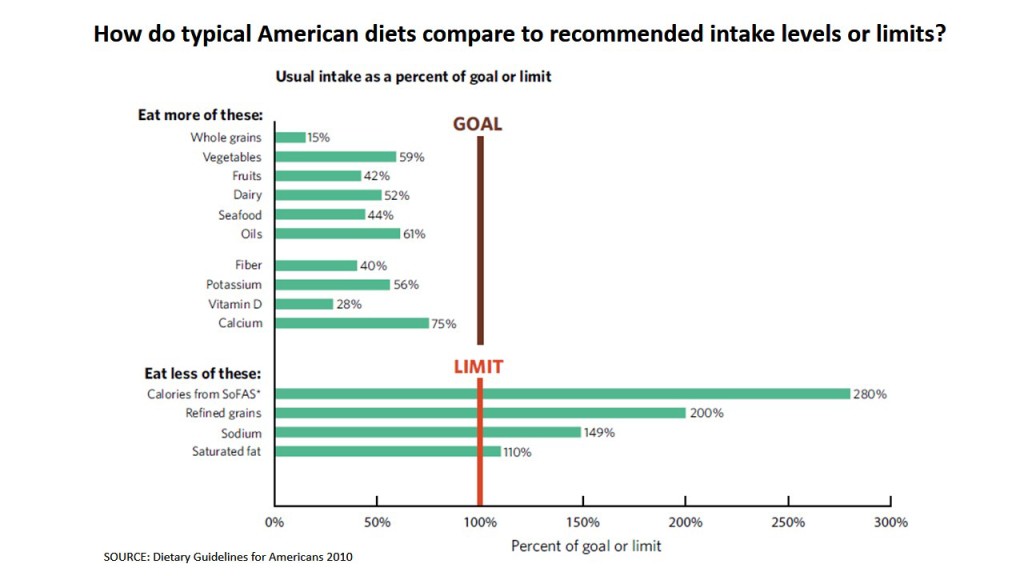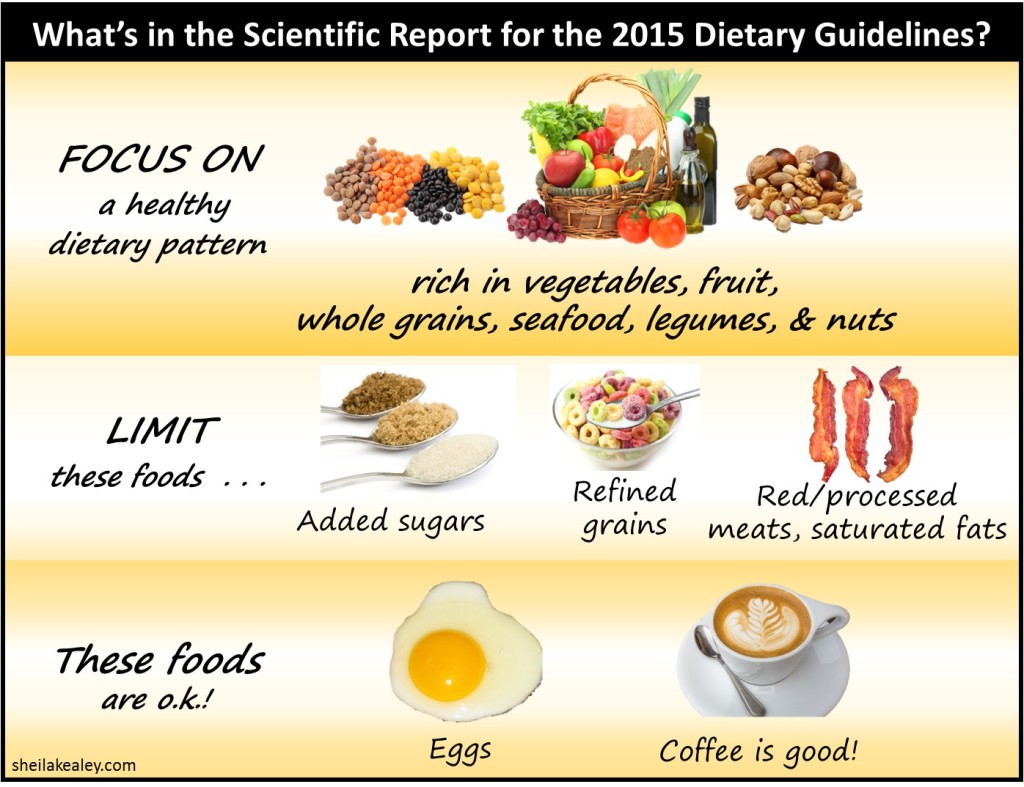A panel of nutrition experts has released a report to craft the 2015 US Dietary Guidelines for Americans. A goal of the guidelines is to provide evidence-based nutrition recommendations, and this report certainly seems to be on the right track.
There will likely be complaints about the new guidelines, probably following the theme of criticisms of earlier guidelines. As I’ve written about previously, critics claim that guidelines are outdated and are making people fat or sick. These anti-guideline statements aren’t backed by scientific evidence. A critical piece that is ignored in these claims is that most people weren’t following dietary guidelines.
In reality, here is how Americans are eating . . .
- Guidelines can’t be blamed for current health problems, as few people have adhered to them
- Guidelines haven’t recommended refined carbohydrates, low fiber grains and cereals, or high sugar items – foods that are widely overconsumed and likely contributors to obesity and chronic disease
- Data show that an increase in calories better explains the obesity epidemic than recommendations to reduce fat intake (and contrary to popular belief, Americans did not reduce their fat intake, but they did increase their calorie intake)
- Most people consume refined grains, or grains as part of desserts – which affects health much differently than whole grains, though critics tend to lump all carbs or grains in one category (somewhat like equating candy to unprocessed oats)
- Currently, the most disease-protective dietary patterns are Mediterranean, DASH (Dietary Approaches to Stop Hypertension), or patterns assigned by studies as “Prudent” “High Quality” or “Healthy Eating” – they all contain whole grains and are relatively high in carbohydrates, often demonized by dietary guidelines critics.
What is Proposed for
the New Guidelines?
I think the best part of the guidelines is an emphasis on dietary patterns, rather than nutrients or specific foods. Although much of nutrition research focuses on investigating the influence of intakes of specific nutrients or foods on health, at the end of the day, it’s our overall diet that counts. Also, this emphasis reflects a growing appreciation of the complex interaction among nutrients and other food components.
You can view the full report here, or have a look at the articles listed below, which do a nice job of summarizing the report.
And here’s a quick graphic I put together to summarize the current guidelines.
More Reading:
- Scientific Report of the 2015 Dietary Guidelines Advisory Committee
- Distorting Nutrition Facts to Generate Buzz (Michael F. Jacobson, CSPI)
- The 2015 Dietary Guidelines Advisory Committee releases its courageous report (Marion Nestle, Food Politics)
- I Like the Dietary Guidelines Report (David Katz)
- How New Dietary Guidelines Report Align with Cancer-Protective Diet (American Institute for Cancer Research)
- Eggs Are Back: The Elegant Simplicity of the New Diet Guidelines (The Atlantic)
- The Real Bad Egg Is Sugar. (New York Times)
- Diet Experts Push More Plants, Less Meat in Nod to Environment (Wall Street Journal)
- Dietary Guidelines for America by the Numbers. Nice infographic! (Food Insight)
- Nutrition Panel: Egg With Coffee Is A-OK, But Skip The Side Of Bacon (NPR, The Salt)
_______________
Updated “More Reading” March 03, 2015

